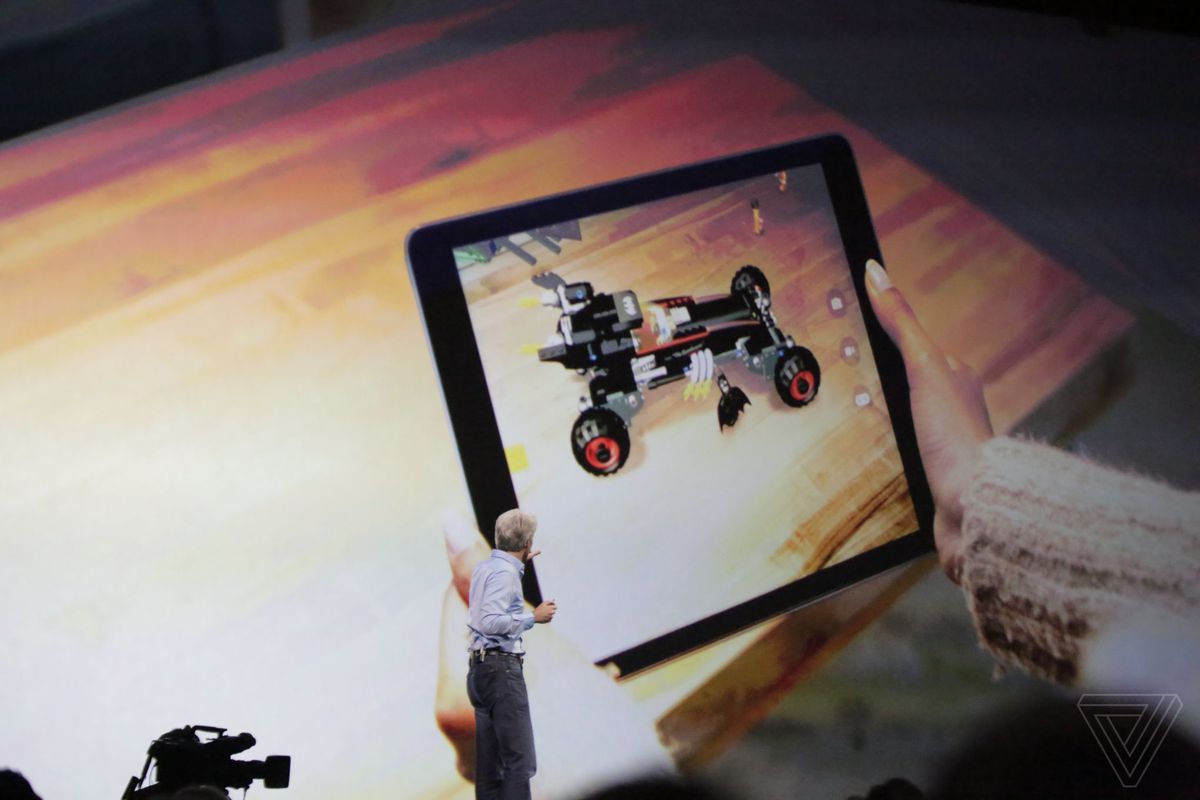
When Tim Cook took center stage to kick off Apple's WWDC 2017 conference, we knew that something was coming. A lot was discussed yesterday: watchOS 4, macOS High Sierra, iOS 11, the arrival of Siri on a hardware called HomePod.
Of all the announcements, though, the one that really resonates with the digital and marketing leaders is the launch of the ARKit: a set of tools for developers to create augmented reality apps, that has been boasted as the “largest AR platform in the world”.
The analysts have immediately considered this new platform as the definitive consecration of the AR technology for business. Apple did not show a dedicated app, but the ARKit - with its support for Unity, Unreal Engine and Scenekit - puts the AR at the heart of Apple's (and your) future.
In the 1990s, virtual reality (VR) was expensive. Smartphones made high-quality small screens, motion sensors and processors affordable, enabling the Oculus Rift to launch in 2012. In virtual reality, a virtual world replaces the physical reality.
VR immerses the user in a believable situation. Users can experience traveling the world, exploring space or seeing inside the human body. Touch elements like the floor sinking slightly as the user steps on virtual stairs add to the illusion.
“Mixed reality” (MR) inserts virtual items into the physical world. Users can add virtual elements to a room or make parts of the room disappear.
“Augmented reality” (AR) – what Google Glass offered before being terminated as a pioneer market experiment – is transparent and is layered on top of the natural world.
At its best, VR, AR and MR are highly social. People can play with objects together, enjoying a compelling shared environment. Some systems also map and save their surroundings, allowing users in different locations to meet in a virtual version of a real place. On the downside, users can find them overwhelming and need a rest after some time of virtual activity.
In the next 15 years, VR, MR, and AR are likely to become part of everyone’s working and recreational lives (Apple officially praised the success of Pokémon Go), and of our relationship with brands. In 10 years mixed-reality technology will be used as much as, if not more than, smartphones.
Wearable screens will replace physical monitors, and, as it happened with the smartphone, the more popular this technology become, the faster it will grow. No matter which company gets there first, virtual reality technologies are set to have a real impact on people’s lives.
Among the initial steps of this path, Apple announced yesterday its tool ARKit, which will provide advanced augmented reality capabilities on iOS. It is supposed to allow for “fast and stable motion tracking” that makes objects look like they are being placed in real space, instead of simply hovering over it.
On stage, Apple showed off a very basic implementation of ARKit: you can map the flat surface of a table and place a teacup on it with realistic perspective, drawing information from an iPhone or iPad’s sensors and cameras.
However, as a marketer, you can make much more complex experiences: imagine allowing your customers to see your products in their home before buying them. Or, if you are a luxury goods maker, show how they would be wearing your accessory. Or, if you are a car maker, dream your dream car in their box. And share their experience on all social networks.
Note: to this purpose, Neosperience Cloud already incorporates ARKit capabilities in the upcoming Summer '17 release, to the benefit of all our customers.
As also shown by Facebook during the last F8 Conference, the Customer Experience will soon become the new currency in VR/AR/MR. This shift from the creation, transmission, and consumption of content to the creation, transmission, and consumption of customer experience will define a whole new approach to branding and product marketing.
Now it is your turn to make the world a better place for customers and brands. How do you think it is most effective to use this innovation in your marketing and sales activities?
Download The Mobile Engagement Playbook, a collection of relevant insights that'll help you to overcome the challenges of the digital transformation and grow your business exponentially.



 Your magnifing glass to deeply understand your users and increase the value of each relatonship.
Your magnifing glass to deeply understand your users and increase the value of each relatonship. Listen to the voice of your customers deeply to understand what they truly want.
Listen to the voice of your customers deeply to understand what they truly want. The Lead Generation Platform to get leads from anonymous traffic on your website.
The Lead Generation Platform to get leads from anonymous traffic on your website.  Understand the behavior of people in physical spaces and monitor safety requirements.
Understand the behavior of people in physical spaces and monitor safety requirements. The Digital Commerce Platform designed to follow the most modern technological standards..
The Digital Commerce Platform designed to follow the most modern technological standards.. The XReality platform to tell brand and product stories by connecting physical and digital worlds.
The XReality platform to tell brand and product stories by connecting physical and digital worlds. Points, rewards, levels, badges, missions: a world of nudges to nurture your customer community.
Points, rewards, levels, badges, missions: a world of nudges to nurture your customer community. Discover all the other solutions!
Discover all the other solutions!









